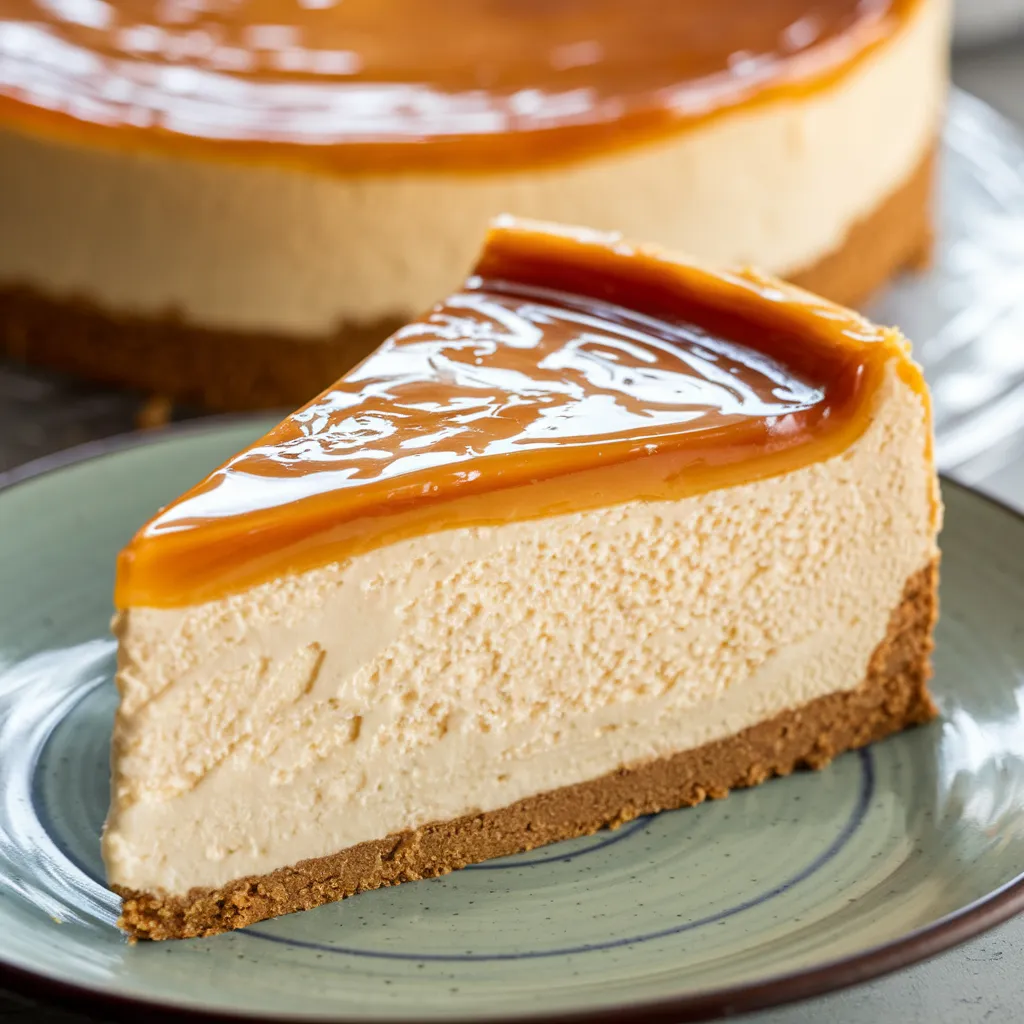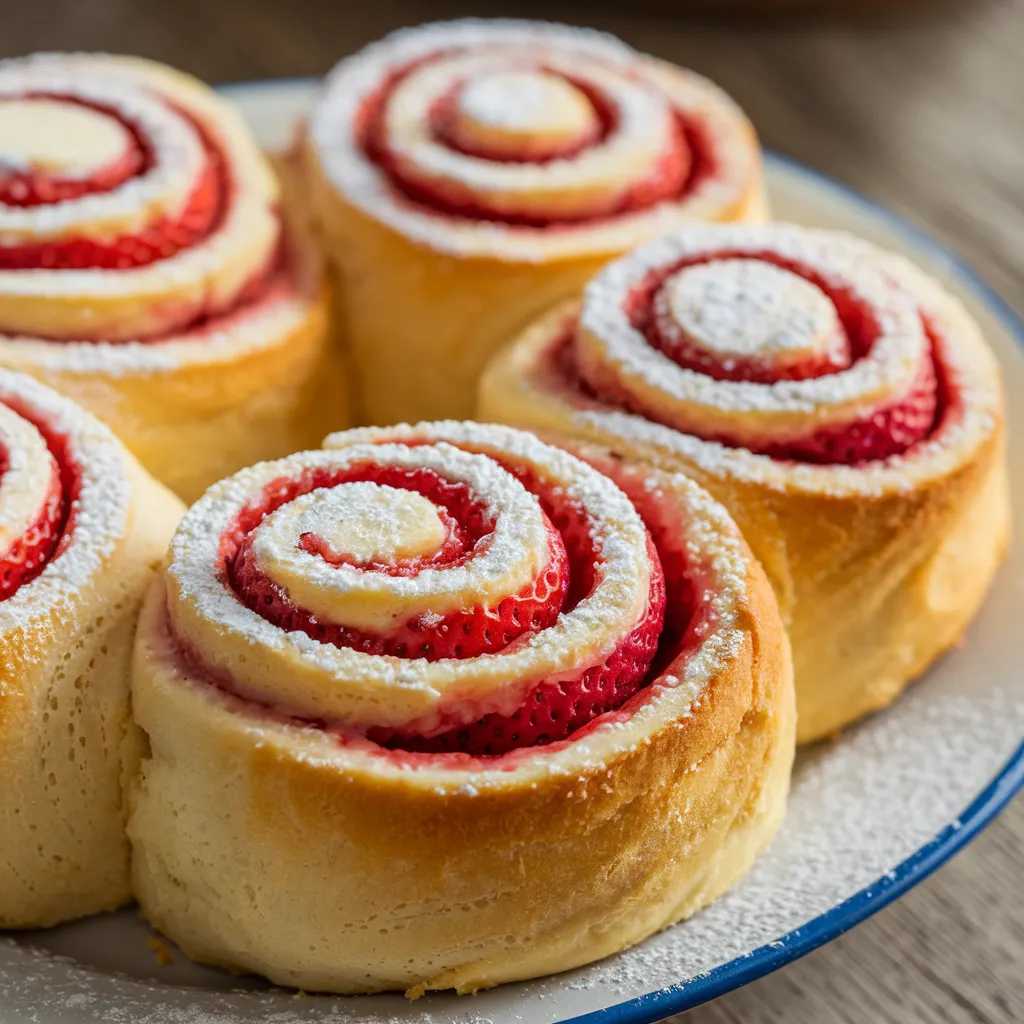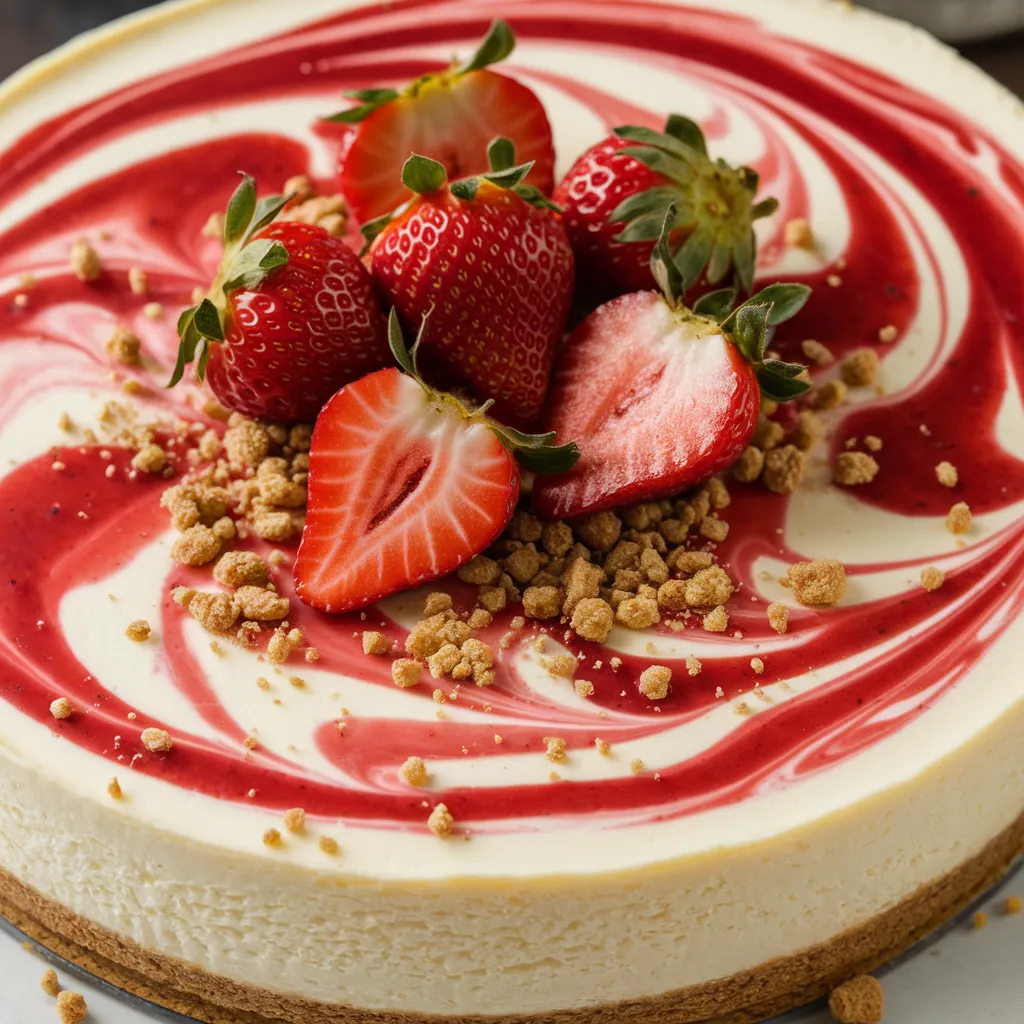Cottage Cheese Ice Cream: The Unexpected Frozen Treat

Step into the world of cottage cheese ice cream, a one-of-a-kind frozen dessert that’s not only creamy but also rich in protein. This inventive treat is becoming a favorite for its nutritional perks and guilt-free indulgence.

Table of Contents
Key Takeaways
- High in protein and low in calories
- Guilt-free indulgence with a creamy texture
- Unique flavor profiles and versatility
- Nutritional benefits from cottage cheese
- Easy to make at home with simple ingredients
The Surprising World of Dairy-Based Frozen Desserts
The frozen dessert market is getting a delicious makeover, with dairy-based creations taking center stage. Health-conscious consumers are hungry for options that deliver nutrition without losing the creamy indulgence they love. Leading the trend is cottage cheese—a protein-packed, versatile ingredient that’s redefining what frozen treats can be.
What Makes Cottage Cheese Different in Frozen Treats
Cottage cheese brings a unique edge to the frozen dessert world, combining rich nutrition with indulgent texture. Packed with high-quality protein and a naturally creamy consistency, it’s an ideal base for crafting protein-rich frozen treats. Unlike traditional ice cream mixes loaded with empty calories, cottage cheese delivers a wholesome boost without sacrificing the velvety smoothness dessert lovers crave.

The Rising Popularity of Protein-Rich Desserts
The demand for protein-rich desserts is soaring as health-conscious consumers search for indulgences they can enjoy without the guilt. Cottage cheese ice cream is emerging as a star in this movement, delivering a dessert that’s both satisfying and packed with nutrients. Protein-rich treats like this offer multiple benefits:
- Higher satiety levels that help curb unnecessary snacking
- Support for muscle health thanks to quality protein content
- Flexibility to fit various dietary needs, from low-sugar to gluten-free
As more people prioritize wellness without giving up flavor, dairy-based frozen desserts such as cottage cheese ice cream are poised for significant growth in popularity.
The History and Origins of Cottage Cheese in Desserts
For centuries, cottage cheese has been a staple in traditional desserts, especially across European cuisine. Celebrated for its distinctive texture and nutrient-rich profile, it has long been a go-to ingredient for creating indulgent yet wholesome sweet dishes.
Traditional Uses of Cottage Cheese in Sweet Dishes
Cottage cheese has been a key ingredient in countless traditional desserts, from Eastern European pierogi fillings to rich, creamy German specialties. Its mild flavor and impressive protein content have made it a beloved staple in regional recipes for generations.

Evolution into Frozen Applications
As culinary techniques have advanced, cottage cheese has found its way into the world of frozen desserts. The surge in popularity of cottage cheese ice cream highlights its remarkable versatility in cold, creamy creations. This shift has ushered in a new era of protein-rich frozen desserts that blend indulgence with nutrition.
From its roots in traditional sweet dishes to its role in today’s innovative frozen treats, cottage cheese continues to prove its adaptability and timeless appeal—bridging heritage and modern wellness trends.
Nutritional Benefits of Cottage Cheese Ice Cream
Packed with protein and calcium, cottage cheese ice cream is transforming the way we think about healthy desserts. This innovative frozen treat delivers indulgent flavor while offering a host of nutritional benefits making it a go-to choice for health-conscious dessert lovers seeking both taste and wellness in every scoop.
Protein Content Comparison
Cottage cheese ice cream distinguishes itself with its impressive protein content. Unlike traditional ice cream, which usually contains less than 5 grams of protein per serving, cottage cheese ice cream can deliver up to 20 grams, making it an ideal option for post-workout recovery or a satisfying, protein-packed snack. This nutritional edge positions it as a smart choice for those seeking both flavor and functional benefits in their desserts.

Calcium and Other Essential Nutrients
Beyond its high protein content, cottage cheese ice cream is also packed with calcium and other essential nutrients. Calcium supports strong bones and teeth, while also playing a vital role in muscle function and nerve health. Additionally, cottage cheese provides important minerals like potassium and phosphorus, along with B vitamins, making it a nutrient dense choice for health-conscious dessert lovers.
Lower Fat Options Without Sacrificing Creaminess
One of the standout benefits of cottage cheese ice cream is its ability to offer lower-fat options without sacrificing creaminess. When blended with complementary ingredients, it achieves a smooth, luscious texture that rivals traditional ice cream making it an ideal low-fat alternative that delivers both taste and satisfaction.
In conclusion, cottage cheese ice cream is more than just a delicious treat; it’s a nutritious powerhouse. With its superior protein content, abundant calcium, and other essential nutrients, combined with the potential for reduced fat, it stands out as a top choice for health-conscious dessert lovers seeking a wholesome indulgence.
Why Cottage Cheese Makes an Excellent Ice Cream Base
Cottage cheese is transforming the frozen dessert landscape with its creamy texture and remarkable ability to absorb flavors. This versatile, nutrient-rich ingredient serves as a unique foundation for crafting a wide range of delicious and innovative ice cream flavors.
Texture and Creaminess Factors
The unique texture of cottage cheese plays a crucial role in its effectiveness as an ice cream base. When blended, it transforms into a creamy, smooth consistency comparable to traditional ice cream. Its high protein content further enhances this richness, making it an appealing choice for anyone looking for a more satisfying and nutritious frozen treat.
Flavor Absorption Properties
A key advantage of using cottage cheese as an ice cream base is its exceptional ability to absorb and enhance flavors. This makes it possible to craft a diverse array of flavors—from classic sweet vanilla and strawberry to more complex, dessert-inspired creations. Its neutral taste provides the perfect canvas for experimenting with a wide range of flavor profiles.
Freezing Characteristics
Cottage cheese maintains its creamy texture even when frozen, making it an excellent ingredient for homemade ice cream. Unlike some alternatives that can become icy or grainy, cottage cheese retains a smooth, velvety consistency. This unique quality, paired with its impressive nutritional benefits, positions cottage cheese as a standout choice in the frozen dessert category.
Basic Cottage Cheese Ice Cream Recipe
Making ice cream at home has never been easier, thanks to the simplicity of cottage cheese recipes. With just a few ingredients and some basic equipment, you can create a delicious and healthy dessert that’s perfect for any occasion.
Essential Ingredients
To make a basic cottage cheese ice cream, you’ll need the following ingredients:
- 1 cup cottage cheese
- 1/2 cup granulated sugar
- 1/4 cup unsweetened almond milk
- 1 tsp vanilla extract
Equipment Needed
Having the right equipment can make a big difference in the quality of your homemade ice cream. You’ll need:
- A blender or food processor
- An ice cream maker (optional)
- A freezer-safe container with a lid
Step-by-Step Preparation
Now that you have your ingredients and equipment, it’s time to start making your ice cream.
Blending Techniques
Begin by blending the cottage cheese, sugar, and almond milk in a blender or food processor until smooth. You may need to stop the blender and scrape down the sides a few times to ensure everything gets fully incorporated.
Freezing Methods
If you have an ice cream maker, follow the manufacturer’s instructions to churn your ice cream. If not, pour the blended mixture into a freezer-safe container and freeze for about 2-3 hours, stirring every 30 minutes until the desired consistency is reached.
| Ingredient | Quantity | Purpose |
| Cottage Cheese | 1 cup | Base ingredient, provides protein and creaminess |
| Granulated Sugar | 1/2 cup | Adds sweetness |
| Unsweetened Almond Milk | 1/4 cup | Helps achieve desired consistency |
| Vanilla Extract | 1 tsp | Enhances flavor |
By following these simple steps and using the right ingredients, you can create a delicious homemade ice cream that’s both healthy and satisfying.
No-Churn Cottage Cheese Ice Cream Options
You don’t need an ice cream maker to enjoy delicious homemade cottage cheese ice cream, thanks to simple no-churn techniques. These methods allow you to create creamy, dreamy desserts with minimal equipment.
Simple Freezer Method
The simple freezer method involves mixing your cottage cheese ice cream base and then freezing it in a container. To achieve the best results, it’s essential to stir the mixture every 30 minutes until it’s fully frozen. This process, known as “tempering,” helps to break down ice crystals and results in a smoother texture.
Tips for the Simple Freezer Method:
- Use a shallow metal container to help the mixture freeze faster and more evenly.
- Stir the mixture vigorously to incorporate air and break down ice crystals.
- Repeat the stirring process every 30 minutes for 2-3 hours, or until the desired consistency is achieved.
Food Processor Techniques
Another effective no-churn method involves using a food processor to blend the frozen cottage cheese mixture into a creamy consistency. This technique can save time and effort compared to the simple freezer method.
To use the food processor technique:
- Freeze the cottage cheese mixture in a container until it’s solid, about 2 hours.
- Break the frozen mixture into chunks and process in a food processor until smooth.
- Return the mixture to the freezer to firm up before serving.
Make-Ahead Tips and Storage
Cottage cheese ice cream can be made ahead and stored in the freezer for later use. To maintain its creamy texture, it’s crucial to store it properly.
Storage Tips:
- Use an airtight container to prevent freezer burn and other flavors from affecting the ice cream.
- Press a piece of parchment paper or plastic wrap directly onto the surface of the ice cream before sealing the container.
- Label the container with the date and contents, and store it in the freezer at 0°F (-18°C) or below.
Flavor Variations and Mix-In Ideas
With cottage cheese ice cream, the possibilities for unique flavor combinations are endless. One of the joys of making your own ice cream is experimenting with different flavors and mix-ins to create something truly special.
Fruit-Based Variations
Fruit adds natural sweetness and flavor to cottage cheese ice cream. Some popular fruit-based variations include:
- Mango Madness: Blend in pureed mango for a tropical twist.
- Strawberry Cheesecake: Mix in diced strawberries and a hint of vanilla.
- Blueberry Bliss: Combine fresh or frozen blueberries for a antioxidant-rich treat.
Chocolate and Dessert-Inspired Options
For those with a sweet tooth, cottage cheese ice cream can be transformed into a decadent dessert. Try these ideas:
- Chocolate Chip Cookie Dough: Mix in dark chocolate chips and chunks of cookie dough.
- S’mores Please: Add cocoa powder, toasted marshmallows, and graham cracker crumbs.
- Cheesecake Delight: Blend in cream cheese, vanilla, and crushed graham crackers.
Savory and Unexpected Combinations
For a unique twist, consider savory mix-ins that complement the tanginess of cottage cheese. Some ideas include:
| Mix-In | Description |
| Cinnamon | Adds warmth and depth to the ice cream. |
| Nuts (Almonds, Walnuts) | Provides crunch and nutty flavor. |
| Cocoa Nibs | Offers a intense chocolate experience. |
Experimenting with different flavor variations and mix-in ideas is where the true fun begins with cottage cheese ice cream. Whether you’re in the mood for something fruity, chocolatey, or savory, there’s a combination waiting to be discovered.
Cottage Cheese Ice Cream for Special Dietary Needs
Adapting cottage cheese ice cream to special diets is easier than you think, opening up a world of possibilities. This versatility makes it an excellent option for those with specific dietary requirements.
Keto-Friendly Adaptations
For individuals following a ketogenic diet, cottage cheese ice cream can be a great treat. By using full-fat cottage cheese and sweetening it with keto-friendly sweeteners like stevia or erythritol, you can enjoy a delicious and compliant dessert. Keep the carb count low by avoiding high-carb mix-ins.
Low-Sugar and Diabetic Options
Those managing diabetes or reducing sugar intake can also enjoy cottage cheese ice cream. Use natural sweeteners or sugar-free alternatives to minimize the sugar content. Additionally, choosing cottage cheese that is low in sodium can further enhance the health benefits.
Lactose-Sensitive Considerations
For individuals with lactose intolerance, cottage cheese ice cream can still be an option. Some people find that the lactose in cottage cheese is more easily tolerated than in other dairy products. However, for those with severe intolerance, using lactose-free cottage cheese or a non-dairy alternative can be a solution.
| Dietary Need | Adaptation |
| Keto Diet | Use full-fat cottage cheese and keto-friendly sweeteners |
| Low-Sugar/Diabetic | Use natural or sugar-free sweeteners |
| Lactose Intolerance | Choose lactose-free cottage cheese or non-dairy alternatives |
Troubleshooting Your Homemade Frozen Treats
Achieving the perfect texture and flavor in your cottage cheese ice cream is easier when you know how to troubleshoot common issues. Making ice cream at home can sometimes result in texture issues or ice crystals, but with a few simple adjustments, you can achieve a smooth and creamy treat.
Preventing Ice Crystals
One of the most common issues with homemade ice cream is the formation of ice crystals, which can give the ice cream an unpleasant texture. To prevent ice crystals, ensure that your mixture is chilled thoroughly before freezing and that you’re using a consistent churning process. Adding a small amount of stabilizer like guar gum or xanthan gum can also help.
Addressing Texture Issues
If your cottage cheese ice cream turns out too icy or too dense, there are a few adjustments you can make. For an icy texture, try increasing the churning time or adding more stabilizers. If it’s too dense, you might need to adjust the ratio of cottage cheese to other ingredients or add a bit more cream.
Balancing Sweetness and Flavor
Balancing sweetness and flavor is crucial for a delicious ice cream. If your ice cream tastes too bland, consider adding a bit more sugar or a flavor enhancer like vanilla extract. Conversely, if it’s too sweet, you can adjust the sweetness level by adding more cottage cheese or a pinch of salt.
Serving and Pairing Suggestions
Transform your cottage cheese ice cream into a show-stopping dessert with these serving and pairing tips. Whether you’re hosting a party or enjoying a quiet night in, the right combinations can elevate your dessert experience.
Complementary Toppings
Enhance your cottage cheese ice cream with a variety of toppings. Some popular options include:
- Fresh berries for a burst of flavor and color
- Crunchy nuts like almonds or walnuts for added texture
- Dark chocolate chips or shaved chocolate for a decadent treat
- Caramel sauce for a sweet and salty contrast
Dessert Pairings
Cottage cheese ice cream pairs well with various desserts, creating a delightful harmony of flavors. Consider pairing it with:
- Warm apple crisp for a comforting dessert combination
- Fresh fruit salad for a light and refreshing treat
- Chocolate brownie for a rich and indulgent experience
Creating an Ice Cream Bar Experience
Take your dessert game to the next level by creating an ice cream bar. Here’s how:
- Set up a toppings bar with a variety of options like nuts, fruits, and sauces
- Offer different flavors of cottage cheese ice cream
- Include complementary desserts like cookies or brownies
By following these serving and pairing suggestions, you can turn a simple dessert into an unforgettable experience. Get creative and enjoy the versatility of cottage cheese ice cream!
Conclusion: Embracing the Unexpected Delight of Cottage Cheese Ice Cream
Cottage cheese ice cream is a unique dessert that offers a guilt-free indulgence, making it an attractive treat for those seeking healthier options. Throughout this article, we’ve explored the nutritional benefits, provided recipes, and offered tips for making and enjoying this unexpected delight.
By incorporating cottage cheese into your ice cream, you can enjoy a creamy texture while benefiting from its high protein content and lower fat options. Experiment with new flavors and variations to find your favorite combinations, and don’t be afraid to get creative with mix-ins and toppings.
Embracing cottage cheese ice cream as a regular treat can bring a new level of enjoyment to your dessert routine. So, go ahead and give it a try – your taste buds and body will appreciate the guilt-free indulgence that comes with this unexpected delight.
FAQ
What is cottage cheese ice cream?
Cottage cheese ice cream is a type of frozen dessert made with cottage cheese, which provides a unique texture and a boost of protein. It’s a healthier alternative to traditional ice cream and can be made with various flavorings and mix-ins.
Is cottage cheese ice cream healthy?
Yes, cottage cheese ice cream is considered a healthy dessert option due to its high protein content, calcium, and other essential nutrients. It’s also lower in fat and calories compared to traditional ice cream, making it a guilt-free indulgence.
How do I make cottage cheese ice cream at home?
To make cottage cheese ice cream at home, you’ll need cottage cheese, a sweetener, and any desired flavorings or mix-ins. Simply blend the ingredients together, then freeze the mixture using an ice cream maker or a no-churn method.
Can I customize cottage cheese ice cream to suit my dietary needs?
Cottage cheese ice cream is highly adaptable to various dietary preferences, including keto, low-sugar, and lactose-sensitive diets. By adjusting sweeteners, flavorings, or mix-ins, you can easily customize recipes to meet specific nutritional needs without sacrificing taste.
How do I prevent ice crystals in my homemade cottage cheese ice cream?
To prevent ice crystals, make sure to blend the mixture thoroughly, use a sufficient amount of sweetener, and freeze the mixture at a consistent temperature. You can also try using an ice cream maker or adding a stabilizer like guar gum to help prevent ice crystals.
Can I use cottage cheese ice cream as a base for other desserts?
Yes, cottage cheese ice cream can be used as a base for other desserts, such as milkshakes, smoothies, or even as a topping for pancakes or waffles. Get creative and experiment with different combinations to find your new favorite dessert!
How long does homemade cottage cheese ice cream last?
Homemade cottage cheese ice cream typically lasts for 2-3 months in the freezer, depending on storage conditions and handling. Be sure to store it in an airtight container and keep it at a consistent freezer temperature to maintain its quality.






